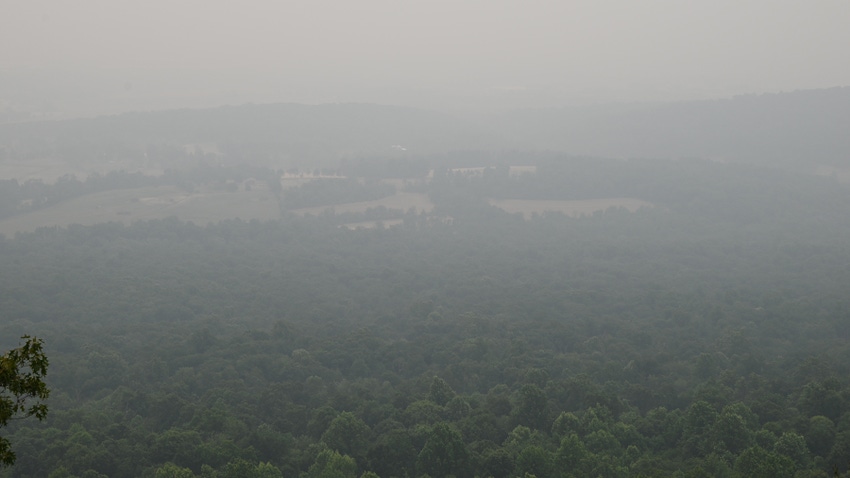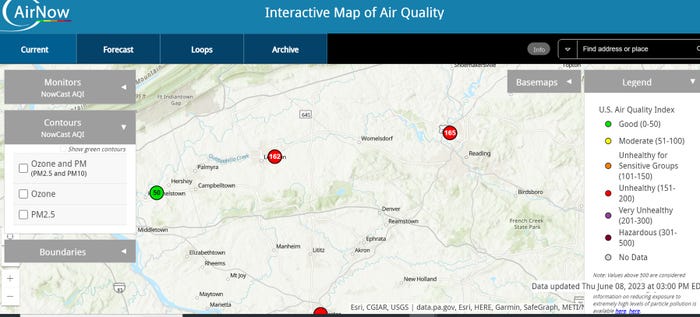
I never thought that I would not allow my children to play outside because of bad air quality. Yet that’s what I had to do last week because of the wall of smoke blown down from Canada’s wildfires.
It happened so quick, too. On Monday, I was walking wheat fields helping count plants and estimate yields for this year’s crop. It was a beautiful day. Blue skies, warm temperatures, a perfect day for a field walk.
The next day, the skies turned a little hazy, but it wasn’t that big of a deal. I’ve seen haze before, especially when it’s hot.
Then, Tuesday evening came. As I was coaching my son’s baseball team, I saw the sky turn a grayish-orange color, and I could smell burning wood. It was the thickest haze I have ever seen.
The smell was the worst, too. I’m used to smelling rancid things — I live near several farms that spread manure — but this was the worst. And it was thick. It was something I never experienced before.
My wife said something to me that really stuck: “Is this going to become normal?”
She was referring to the concerns “experts” have that climate change will lead to drier, hotter conditions and, as a result, more wildfires. Regardless of your views on climate change, when you are forced to bring your children inside on the first day of summer vacation because the air is too harmful to breath, it’s sobering.
The sad truth is that this could very well be the beginning of a trend. It has been predicted that this could be the most destructive Canadian wildfire season in history because of the dry weather and hot temperatures. If the wind is blowing in the right direction, like what happened last week, we could very well see billowing smoke cover our region again this summer.
According to Centers for Disease Control and Prevention, wildfire smoke is a mix of gases and fine particles from burning vegetation, building materials and other materials. It can make anyone sick. Even someone who is healthy can get sick if there is enough smoke in the air.
I consider myself relatively healthy, and I started coughing and had trouble breathing after just a few minutes.
Many of you are older and have health problems already. If they are calling for heavy smoke in the air and you need to be outside, wear a mask. If you have employees that need to be outside, have them wear masks.
According to CDC, particulate respirators are the simplest and least expensive, but also the least protective of the respirator masks available. They only protect against particles, not chemicals, gases or vapors. They are called particulate respirators because they clean the particles out of the air as you breathe.
N-95 masks — remember those from the COVID-19 days — are the most common particulate respirators out there. You can get a pack of 10 masks on Amazon for less than $20. That’s more than enough to cover yourself and some of your employees. Heck, it wouldn’t hurt to have a few packs of them on hand.
A chemical cartridge respirator is the next step up. You may have one of these on hand already if you are spraying a pesticide or any other type of potentially harmful chemical. These can be had on Amazon for as low as $26.
And if you’re wondering what the actual air quality in your area is like, airnow.gov provides air quality scores based on live air quality monitors that are updated each hour.

I hope last week’s smoky haze is not a sign of things to come. If it is, be ready to protect yourself and your workers.
Don’t be stupid. Protect yourself and wear a mask.
Read more about:
WildfiresAbout the Author(s)
You May Also Like






